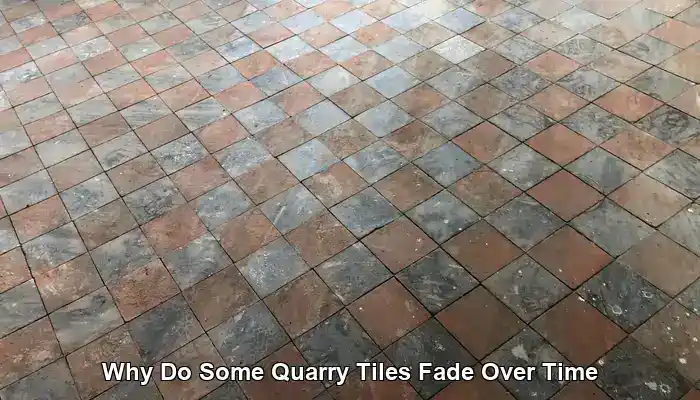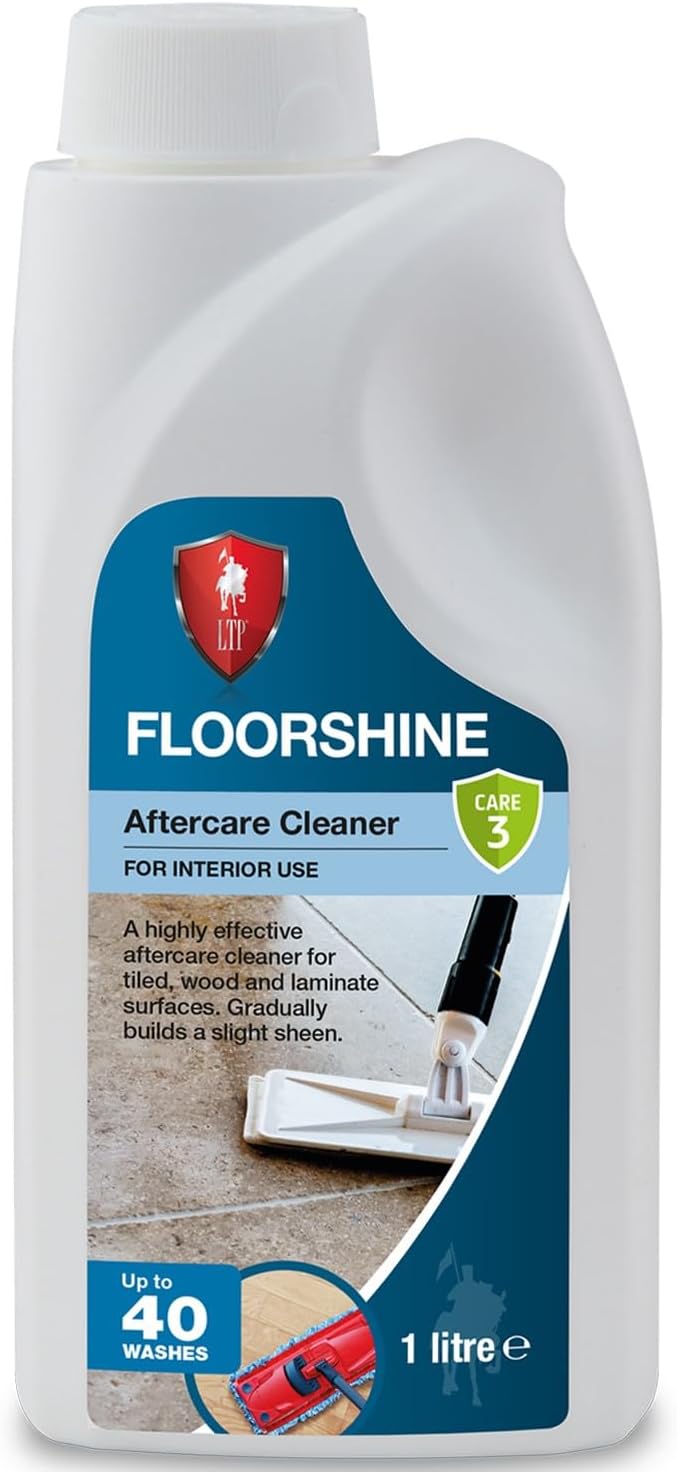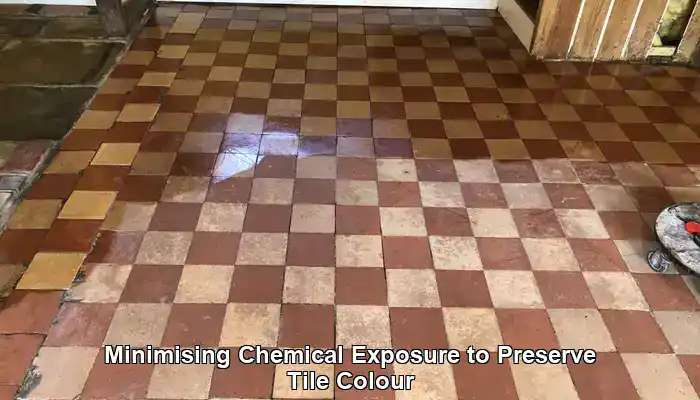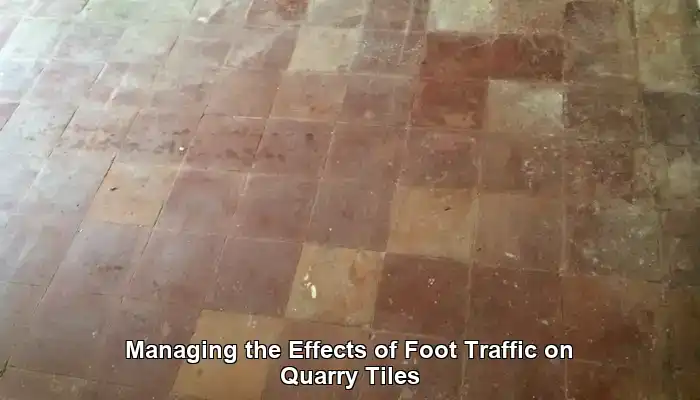
Quarry tiles are highly valued for their remarkable durability, earthy charm, and timeless appeal. Whether enhancing the aesthetic of a rustic kitchen or providing a strong base for a sun-drenched patio, these dense, unglazed ceramic tiles are engineered to withstand significant foot traffic and challenging environmental conditions. Yet, despite their sturdy reputation, homeowners and property managers often encounter the perplexing issue of gradual colour fading over time—sometimes occurring unevenly and at other times presenting quite dramatically. This slow transformation can be particularly bewildering as tiles that once shone with vibrant reds, warm browns, or deep terracotta tones begin to look pale, patchy, or dull.
The gradual fading of Quarry tiles is not merely a superficial cosmetic issue; it frequently signals underlying wear, environmental stress, or chemical degradation. When these tiles are installed outdoors, they are relentlessly exposed to weathering elements such as rain, frost, and fluctuating temperatures, all of which gradually erode their surface. The freeze-thaw cycle, in particular, can create micro-cracks and surface spalling, which in turn reveals the lighter inner layers with coarser textures. In indoor settings, the dynamics are similarly complex yet distinct. High foot traffic can gradually diminish the tile’s pigmented layer, exposing the inner body, which typically consists of larger particles and varied mineral hues. This inherent layering indicates that once the surface is compromised, significant changes in colour and texture become apparent, leading to an unattractive appearance.
In addition to physical wear, exposure to chemicals plays a critical role in the fading process. Strong cleaning agents, especially those with acidic or alkaline properties, can damage sealers and strip away protective coatings. Over time, this increased vulnerability leads to a higher susceptibility to staining, efflorescence (the formation of salt deposits that lighten the surface), and the accumulation of soil in the newly created pits and abrasions. These interconnected factors contribute to a faded, uneven appearance that undermines the tile’s original beauty and structural integrity.
It is crucial to understand the factors that contribute to the fading of quarry tiles to effectively preserve their character and prolong their lifespan. In this comprehensive article, we will explore the environmental, mechanical, and chemical elements that lead to fading—both indoors and outdoors—and offer actionable advice for prevention and restoration. Whether you are maintaining a historic floor or simply aiming to uphold the beauty of your tiles, this guide will help you comprehend the intricate science behind the wear of quarry tiles.
Expert Recommendations: Explore Our Top Products for Maintaining and Cleaning Quarry Tiles

Fila Pro Floor Cleaner
|

LTP Floorshine
|

Vileda H2PrO Spin Mop System
|
Discovering How Outdoor Elements Contribute to the Fading of Quarry Tiles
Quarry tiles that are installed outdoors face a relentless barrage of environmental stressors, which can gradually erode their colour and texture. While these tiles are renowned for their resilience, the unyielding forces of nature can wear down even the most durable surfaces over time, resulting in a dull, lifeless appearance.
Assessing the Weather’s Impact on Quarry Tile Colouration
One of the most significant contributors to fading is the weather, especially the effects of rain and freeze-thaw cycles. Rainwater can penetrate the porous surface of unsealed or inadequately sealed tiles, transporting minerals and contaminants that can stain or leach colour from the tile. When temperatures drop, moisture trapped within the tile expands as it freezes, causing micro-cracks and surface flaking. This repetitive freeze-thaw action reveals the tile’s inner body, which typically contains lighter, less pigmented materials, resulting in a marked loss of vibrancy and richness.
Understanding Surface Wear and Layer Exposure in Quarry Tiles
Quarry tiles are generally crafted with a dense outer crust that encompasses their most vibrant colours. As this outer layer gradually wears away—due to foot traffic, abrasion, or environmental erosion—the inner layer becomes increasingly visible, which tends to be rougher and often features larger aggregate particles in a lighter, more uneven hue. As a result, the tiles take on a patchy appearance that lacks the richness and depth of the original surface, significantly detracting from the overall aesthetic appeal and cohesion of the installation.
The Critical Role of Chemical Damage in Quarry Tile Fading
Outdoor cleaning frequently requires the use of powerful chemicals to combat moss, algae, or grime. Unfortunately, these strong solutions can degrade sealers and strip away protective coatings. Once the sealer is compromised, the tile becomes more vulnerable to staining, mineral deposits, and accelerated wear. Over time, this chemical exposure significantly contributes to fading and surface dullness, greatly diminishing the overall visual appeal of the exterior.
Delving into the Indoor Factors That Cause Quarry Tile Fading

While outdoor quarry tiles are subjected to harsh environmental elements, indoor tiles face a unique set of challenges that can also lead to significant deterioration over time. From high foot traffic to the cleaning methods employed, the fading of indoor quarry tiles often stems from a gradual, cumulative process driven by wear, surface breakdown, and chemical exposure.
Managing Abrasive Wear and Crust Loss in Indoor Quarry Tiles
Quarry tiles are designed with a dense, pigmented outer crust that provides their rich colour and smooth finish. Indoors, particularly in high-traffic areas such as kitchens, hallways, and commercial spaces, this outer crust progressively wears away. As the surface erodes, the inner body of the tile becomes more exposed. This inner layer typically comprises larger mineral particles and features a more porous structure, resulting in a significant shift in colour and texture. Earth-toned tiles may begin to appear mottled or washed out, with lighter patches where the crust has thinned.
Tackling Surface Pitting and Soil Accumulation in Quarry Tiles
As the surface deteriorates, micro-abrasions and pits develop. These small indentations trap soil, grease, and cleaning residues. Over time, the accumulation of grime in these pits results in uneven staining and dullness. Even routine cleaning may not completely eliminate embedded dirt, leading to a faded, blotchy appearance. This issue is particularly prevalent in older floors that have not been adequately sealed or maintained, underscoring the necessity for regular upkeep and meticulous attention to detail.
Comprehending Efflorescence and Mineral Migration in Quarry Tiles
Efflorescence is another significant factor contributing to indoor tile fading. This phenomenon occurs when moisture beneath the tile migrates upwards, carrying soluble salts to the surface. As the water evaporates, it leaves behind a white, powdery residue that lightens the tile’s appearance and can cause surface damage. Efflorescence is especially prevalent in areas lacking sufficient subfloor ventilation or where tiles are installed over damp concrete. If left untreated, it can deteriorate the tile’s surface and complicate cleaning efforts.
The Detrimental Impact of Chemical Overuse and Sealer Breakdown on Quarry Tiles
Indoor cleaning routines often rely on potent chemical agents—especially in commercial or food preparation environments. While these products may successfully eliminate grease and stains, they can also strip away sealers and protective coatings. Once the sealer is compromised, the tile becomes increasingly porous and susceptible to staining, wear, and further fading. Acidic or alkaline cleaners can even etch the surface, permanently altering its texture and colour. Over time, repeated exposure to harsh chemicals accelerates the degradation of both the tile and its finish, exacerbating fading.
Implementing Essential Maintenance Practices to Preserve Quarry Tile Colour
Preventing the fading of indoor quarry tiles is often achievable through proper care. Utilizing pH-neutral cleaners, adhering to a regular sealing schedule, and avoiding abrasive tools can significantly extend the lifespan and appearance of the tiles. For older floors that exhibit signs of wear, enlisting professional restoration services—including deep cleaning, re-sealing, and colour enhancement—can help rejuvenate their original beauty and restore vibrancy.
Implementing Effective Prevention and Restoration Strategies for Quarry Tiles

Understanding the reasons behind quarry tiles fading is merely the starting point—the true value lies in knowing how to prevent this fading and restore the original beauty when wear inevitably occurs. Whether your tiles are installed indoors or outdoors, proactive care and thoughtful restoration can significantly extend their lifespan and preserve their rich, earthy character.
Utilizing Sealing as the Primary Defense Against Fading
One of the most effective strategies for preventing fading is proper sealing. Quarry tiles are inherently porous, and without a protective barrier, they readily absorb moisture, dirt, and chemicals. A high-quality penetrating sealer fills the pores without creating a surface film, allowing the tile to breathe while repelling contaminants. For outdoor tiles, this is especially crucial to safeguard against rain, frost, and algae growth. Indoors, sealing helps resist staining from spills, cleaning products, and foot traffic.
Sealers should be reapplied periodically—typically every 1 to 3 years based on usage and exposure. A simple water-drop test can help determine when resealing is necessary: if water soaks into the surface rather than beading, it’s time for a refresh to maintain optimal protection.
Smart Cleaning: Choosing Gentle Products for Quarry Tiles
Routine cleaning is essential, but the products selected matter significantly. Harsh chemicals, particularly those that are acidic or alkaline, can degrade sealers and etch the surface of the tile over time. This degradation leads to dullness, colour discolouration, and increased vulnerability to staining. Instead, opt for pH-neutral cleaners specifically formulated for stone or tile surfaces. These products effectively lift dirt without compromising the tile’s integrity.
For stubborn grime or efflorescence, use targeted treatments sparingly and always follow with a thorough rinse. Avoid using bleach, ammonia, and vinegar-based solutions, which may seem effective but can cause long-term damage.
Adopting Maintenance Techniques to Preserve the Colour of Quarry Tiles
Regular sweeping and damp mopping are crucial for preventing soil buildup and surface abrasion. Use soft-bristle brushes or microfiber pads instead of abrasive scrubbers, which can wear down the tile’s pigmented crust. In high-traffic areas, consider employing rugs or mats to mitigate direct wear—especially near entryways or kitchen workstations, where foot traffic is typically highest.
For outdoor tiles, pressure washing should be approached with caution. While it can effectively remove surface dirt, excessive pressure may erode the tile or force water into cracks, potentially accelerating freeze-thaw damage. When used, maintain low pressure and keep the nozzle at a safe distance to protect the integrity of the tiles.
Engaging Professional Restoration: Revitalizing Faded Tiles
When fading becomes noticeable and routine maintenance proves insufficient, professional restoration can yield impressive results. Restoration specialists utilize a combination of deep cleaning, mechanical resurfacing, and colour enhancement techniques to rejuvenate tired tiles.
- Deep cleaning effectively removes embedded dirt, grease, and mineral deposits using specialized equipment and solutions tailored for tile care.
- Mechanical honing or polishing smooths worn surfaces and restores texture, particularly on indoor tiles exhibiting surface pitting.
- Colour enhancement sealers can enrich faded tones, especially in earth-toned tiles, by deepening the natural pigments without creating a glossy finish that may detract from their appeal.
In cases of severe wear, restoration may also involve regrouting, tile replacement, or applying protective coatings tailored to the specific environment of the tile.
Establishing a Long-Term Care Strategy for Quarry Tiles
Preventing future fading necessitates a long-term approach. Create a maintenance schedule that includes regular inspections, cleaning, and resealing. Educate household members or staff about proper cleaning techniques and the importance of using appropriate products. For commercial spaces, consider collaborating with a floor care professional to develop a tailored plan that addresses traffic levels and environmental conditions.
If your tiles are part of a heritage property or possess historical significance, consult with conservation experts before undertaking any restoration work. Preserving the authenticity of older quarry tiles often requires specialized techniques and materials to ensure their historical integrity remains intact.
Key Insights on Quarry Tile Maintenance and Care
Quarry tiles are celebrated for their rugged beauty and enduring charm, but even the most resilient materials are not immune to the effects of time. Whether exposed to harsh outdoor elements or the relentless wear of indoor foot traffic, fading is a natural result of environmental stress, mechanical abrasion, and chemical exposure. From the erosion of the tile’s pigmented crust to the subtle impacts of efflorescence and surface pitting, each factor contributes to diminishing the tile’s original vibrancy.
Fortunately, fading is not necessarily a permanent condition. With the right knowledge and care—regular sealing, gentle cleaning, and professional restoration when necessary—quarry tiles can maintain their colour and character for many years. Understanding the causes of fading empowers homeowners, property managers, and restoration specialists to adopt proactive measures that uphold both the aesthetic and structural integrity of these timeless surfaces.
Whether your tiles are part of a heritage property or a modern installation, their longevity relies heavily on how well they are maintained. By respecting the material and addressing its needs, you ensure that your quarry tiles continue to narrate their story—rich in colour, texture, and history—for years to come.
Frequently Asked Questions About Quarry Tile Care and Maintenance
Can faded quarry tiles be effectively restored?
Yes, quarry tiles can often be restored through deep cleaning, resealing, or even professional refinishing techniques, depending on the extent of the fading. Homeowners should explore their options for rejuvenating the beauty of their tiles.
What is the recommended frequency for cleaning quarry tiles?
Regular sweeping should be performed weekly, with more thorough cleaning every few months to maintain their appearance and prevent fading. Establishing a consistent routine will help safeguard the vibrancy of the tiles.
Are there specific sealants designed for quarry tiles?
Yes, there are specialized sealants formulated specifically for quarry tiles that provide protection against moisture and UV rays, enhancing their longevity and appearance. Homeowners should consult professionals for recommendations on the best products.
Which cleaning products should be avoided on quarry tiles?
Avoid using acidic cleaners, harsh chemicals, and abrasive scrubbers, as these can damage the surface and contribute to fading. Instead, opt for gentle, tile-safe products that will not compromise the integrity of the tiles.
How can I tell if my quarry tiles need resealing?
If water no longer beads on the surface or if the tiles appear dull and stained, it may be time to reseal. Regular checks can help ensure optimal protection and appearance.
Does indoor lighting affect the fading of tiles?
Indirect indoor lighting generally has less impact than UV rays, but prolonged exposure to bright light can contribute to gradual fading. Homeowners should consider lighting options when designing their spaces to mitigate this effect.
Can I use a steam cleaner on quarry tiles?
Steam cleaners can be too harsh for quarry tiles, potentially damaging their surface. It’s advisable to adhere to recommended cleaning methods to maintain their integrity and longevity.
Are some quarry tiles more prone to fading than others?
Yes, tiles made from lower-quality materials or pigments may fade more quickly compared to those made from superior materials. Homeowners should prioritize quality when selecting tiles for their spaces.
Does foot traffic significantly affect the lifespan of quarry tiles?
High foot traffic can lead to wear and tear, accelerating fading and increasing the need for maintenance. Homeowners should adopt strategies to manage foot traffic effectively, especially in busy areas.
Is it possible to completely prevent fading in quarry tiles?
While it is challenging to prevent fading entirely, regular maintenance, proper sealing, and selecting quality products can significantly minimize colour loss over time, preserving the beauty of the tiles.
The article Why Do Some Quarry Tiles Fade Over Time: A Guide was first found on https://www.abbeyfloorcare.co.uk
The Article Quarry Tiles Fade Over Time: Understanding the Causes appeared first on https://fabritec.org
The Article Understanding Quarry Tiles: Why They Fade Over Time Was Found On https://limitsofstrategy.com
The Article Quarry Tiles: Reasons for Their Fading Over Time First Appeared ON
: https://ad4sc.com
One response
Ah, the elusive quarry tile! A true testament to nature’s artistry, and yet, like that pair of infamously stubborn jeans we all own, they can sometimes leave us perplexed and a little concerned about their fading charm. I must admit, I share your bewilderment regarding the phenomenon of color fading. It’s like these tiles are taking a slow-motion stroll towards a mellow sunset, and while I appreciate a good aesthetic transition, I’d prefer if my flooring didn’t follow suit!